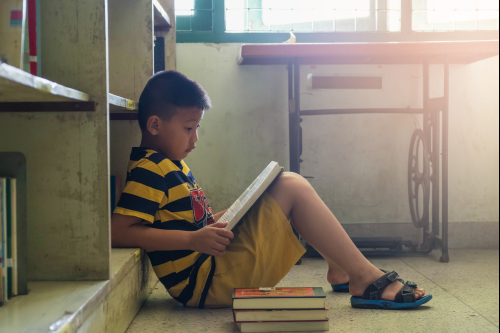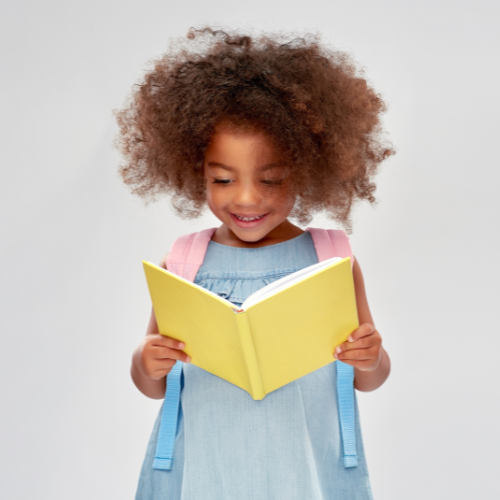3rd Grade Reading Challenges?
Here is How to help
by Ash Kirkland
Third grade is a big year for kids. It’s that magical time when they leap from picture books to chapter books, from simple sentences to paragraphs that demand new skills. For a lot of 3rd graders, this shift feels like going from riding a tricycle to pedaling a two-wheel bike uphill – it’s exciting, but wow, can it be tough! If your child is hitting some bumps in Language Arts, you’re not alone. Let’s talk about what’s going on and how you can support them through it.

Why 3rd Grade Language Arts Can Feel Like a Mountain to Climb
In Indiana, 3rd graders are expected to master some pretty big Language Arts skills, according to the state’s academic standards. These aren’t just “read a book and call it a day” tasks, they’re building blocks for everything that comes later. Here are some common challenges kids face at this stage and why they can trip up even the brightest little learners:

Vocabulary Expansion: Third graders are introduced to a flood of new words. Think “treacherous” or “persuade” instead of “scary” or “ask.” Figuring out what these words mean from context clues (instead of just asking Mom or Dad) can feel overwhelming, especially when they’re expected to use them in their own writing too.
Reading Comprehension: Gone are the days of short, simple stories. Now, kids are tackling longer texts with bigger ideas—like finding the main idea or explaining why a character did something. It’s a mental workout to connect the dots, and some kids struggle to keep up when the text doesn’t come with pictures anymore.
Writing Complete Sentences and Paragraphs: In Indiana, 3rd graders start writing full paragraphs with topic sentences and details. For a kid who’s used to jotting down “I like dogs,” suddenly having to explain why they like dogs in five sentences can feel like a Herculean task.
Spelling and Grammar Rules: Those weekly spelling lists aren’t just for fun—kids are expected to spell tricky words like “necessary” or “beautiful” correctly and use things like commas and quotation marks the right way. It’s a lot to juggle when you’re still figuring out how to hold a pencil comfortably!
These skills are a big leap from 2nd grade, and it’s totally normal for kids to stumble a bit. The good news? Reading and writing are active skills, which means you can jump in and help your child grow!



How to Support Your Child in Language Arts
You don’t have to be a Language Arts wizard to make a difference. Here are some simple, fun ways to boost your child’s skills:
Model Reading: Grab a book and read to your child while they follow along. Let them hear how you pronounce words, pause at commas, and change your tone for excitement or suspense. Then try Echo Reading—read a sentence aloud, and have your child repeat it back to you. It’s like a game, and it helps them practice fluency and pick up on how reading sounds.
Reading Out Loud: This is huge for 3rd graders. Set aside 15 minutes a day for your child to read aloud to you, a sibling, or even the family dog (pets are great listeners!). It builds confidence, helps them hear their own mistakes, and makes those tricky words less scary over time.

Pronunciation Practice: When your child stumbles over a word like “mischievous,” don’t just hand them the answer. Help them break it down – say “mis-CHEE-vus” slowly and let them piece it together. That little victory of figuring it out themselves can be what they need to boost their confidence.
Spelling Word Activities: Those spelling lists coming home? Turn them into a creative challenge. Ask your child to write silly sentences like “The mischievous cat wore a beautiful hat” using their words. Writing it out boosts spelling memory, handwriting, and imagination all at once.
Library Trips: Remember the thrill of picking out a library book as a kid? Take your 3rd grader to your local library and let them explore. Many Indiana libraries even host storytimes or reading clubs, perfect for sparking a love of books!
Stay in Touch With Their Teacher: Teachers are here to support you and your child. Ask what your child’s working on in class or if there are extra resources. Worksheets or online tools might be available. Asking what work is coming up next week can give you a heads-up to practice at home.
ELA Games and Shows: Lean into nostalgia with classics like Reading Rainbow, Wishbone, or Between the Lions—they’re still gold for teaching kids to love stories. Online, sites like IXL and Blooket have fun Language Arts games that sneak learning into playtime.
Actions Your Child Can Take
Your 3rd grader isn’t just a passenger here, they can take the wheel too! Here are some ideas they can try:

Reading Out Loud: Whether it’s a favorite book or a comic, reading aloud helps them hear how words flow and catch mistakes. It’s like flexing a muscle. The more they do it, the stronger they get.
Discussing a Text: After reading, chat about it. Ask, “What did you think about that character?” or “What would you do if you were in that story?” Asking leading questions gets them thinking deeper and builds those comprehension skills.
Writing Creative Sentences to Match a Picture: Grab a photo or drawing and have them write a few sentences about it. A picture of a dog in a raincoat could turn into “The soggy pup splashed through puddles.” It’s a fun way to practice writing and spark creativity.
Writing Letters: Encourage them to write a note to a family member, friend or a pen pal (yes, pen pals are still a thing!). It’s real-world writing practice that feels special—and they might even get a reply to read.

You’ve Got This, and So Do They
Watching your 3rd grader wrestle with Language Arts can feel tough, but these little struggles are just stepping stones. With a bit of support, whether it’s cozy reading time, a library adventure, or a silly spelling game, you can help them find their footing. Before you know it, they’ll be zooming through chapter books and writing stories that make you laugh. Who knows, maybe reading will become their favorite hobby!

